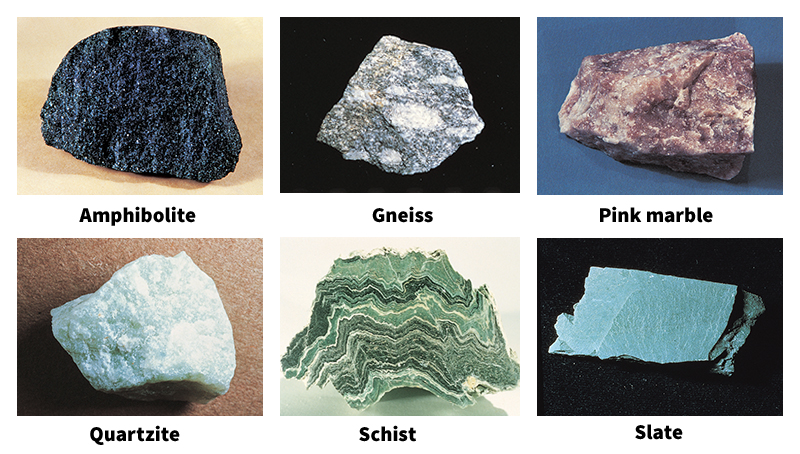Metamorphic << meht uh MAWR fihk >> rock is one of the three main types of rock in Earth’s crust. It forms from the other two main types, igneous and sedimentary. For example, marble is a metamorphic rock. It forms from the sedimentary rock limestone. Schist and slate are metamorphic rocks that come from shale.

Metamorphic rock forms when heat or pressure, or both, cause changes in the “parent” rock. One of the changes is the formation of new minerals, called recrystallization. The new mineral grains often are larger than the old ones. Also, platy materials, such as mica, may crystallize in parallel planes. When this happens, the rock breaks easily along these planes. This characteristic of metamorphic rocks is called rock cleavage.
Several processes can create metamorphic rock. In contact metamorphism, heat produced by nearby magma (molten igneous rock) causes recrystallization. In regional metamorphism, both heat and pressure change rock. Pressure comes from the burial of the rocks deep in Earth’s crust. Movements in the crust may also affect the rock by deforming it. These movements are often associated with the formation of mountains. In a less common process, dynamic metamorphism, only deformation due to crustal movements alters rock. In hydrothermal metamorphism, hot water provides heat that changes the rock. The water often also reacts with the rock, causing chemical changes.
